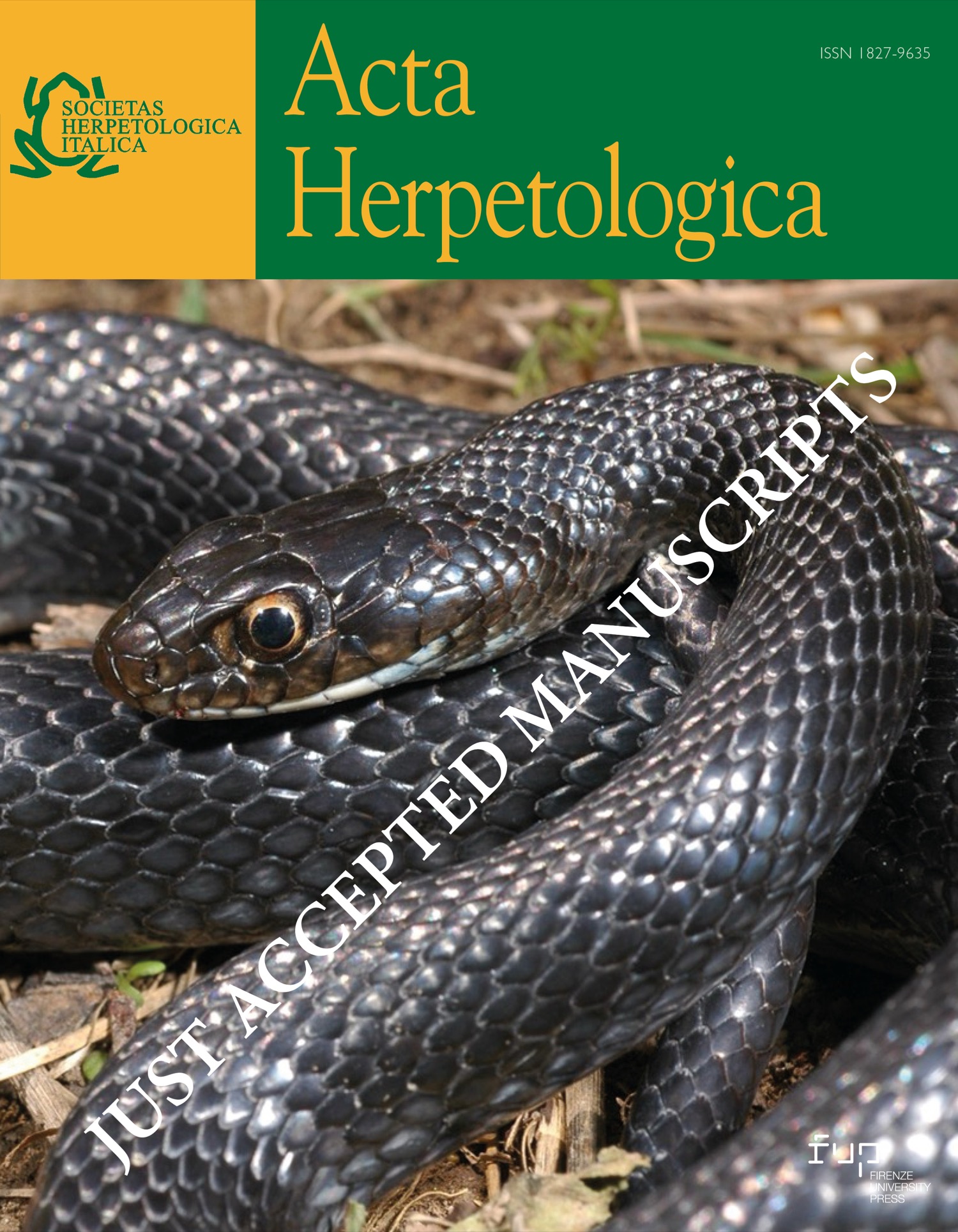Shadowboxing Salamanders: Defensive Behavior in Two Amazonian Bolitoglossa Species (Amphibia: Plethodontidae)
Published 2025-10-09
How to Cite
Copyright (c) 2025 Daniela Pareja-Mejía, Omar Rojas-Padilla, Madison Lacey, Mylena Masache-Sarango, Mirco Solé, Lauren A. O'Connell

This work is licensed under a Creative Commons Attribution 4.0 International License.
Abstract
Salamanders employ diverse anti-predator strategies, yet many tropical species remain poorly documented. We describe a previously unreported defensive display in two Amazonian plethodontids, Bolitoglossa equatoriana and B. altamazonica. During nocturnal surveys in the Apayacu Reserve, Ecuador, an individual of B. equatoriana perched on foliage performed a striking “shadowboxing” display when illuminated: it repeatedly raised and waved its forelimbs while swaying from side to side for several minutes. A comparable behavior was observed in B. altamazonica in Peru after gentle handling for photography. Neither species exhibited skin secretions or bright warning colors during the display, although anecdotal reports suggest mild cutaneous reactions to B. altamazonica secretions. Shadowboxing may therefore function as a visual deterrent, complementing chemical defenses documented in other Bolitoglossa. Similar posturing is rare in salamanders, previously noted only in a few species such as Cryptotriton nasalis. These records expand knowledge of antipredator tactics in neotropical salamanders and underscore the importance of detailed natural-history observations for understanding behavioral diversity and survival strategies in Amazonian amphibians.






